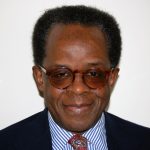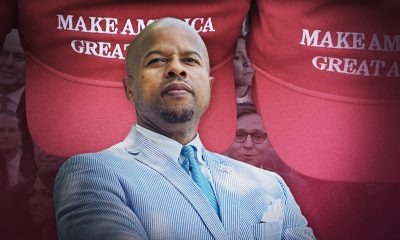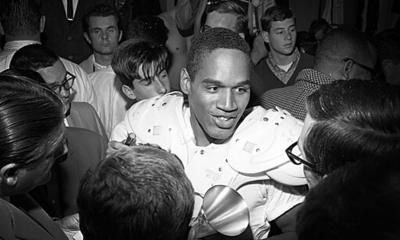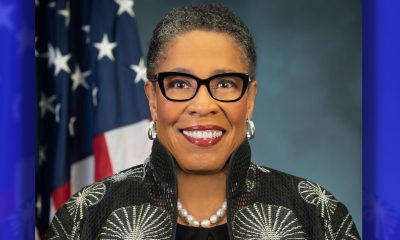Op-Ed
The Economy’s Invisible People

By Lee A. Daniels
NNPA Columnist
Suppose one of the key committees in Congress scheduled a hearing on one of the country’s most debilitating economic problems – the long-term unemployment that’s ensnared millions – and none of the committee members showed up?
That’s almost what happened last week when the Joint Economic Committee’s April 24 hearing opened with just one of its members, Senator Amy Klobuchar, (D-Minn), the vice chair, in attendance. At various times later, three of the committee’s eight other Democrats – Sen. Christopher Murphy, of Connecticut; Rep. John Delaney, of Maryland, and Rep. Elijah Cummings, also of Maryland – showed up. None of its nine Republican members did.
Of course, it’s standard on Capitol Hill for committee members to miss congressional hearings. Their aides have briefed them on the issues and testimony of the witnesses beforehand; and their time that day may appropriately be better spent meeting with constituents, lobbyists, donors, other politicos, or even another congressional committee that had scheduled a conflicting hearing.
Nonetheless, the near-completely no-show hearing acquired a powerful symbolism once a National Journal reporter who was there tweeted a photo of the long, curving impressive-looking dais of mostly empty chairs.
It made the visual points that a voluminous and growing file of research has been cataloging since the Great Recession peaked and the economy began to recover four years ago. First, the recovery has moved too slowly to pare the number of the long-term jobless – those out of work for six months or longer – from what continue to be unprecedented levels. That failure has produced a growing fear that many Americans in this predicament – now numbering 4.6 million people – may never find jobs again.
In turn, that has raised the prospect that today’s long-term unemployed are becoming a large, permanent out-of-work class whose joblessness will undermine the nation’s economic productivity and whose need for financial help will not only exert a tremendous drain on the government’s treasury and private-sector coffers alike but also contribute to Americans’ growing pessimism about their own and the country’s economic fairness and political leadership.
And, finally, and most damaging, the tweet powerfully suggested that the Congress just doesn’t care about the long-term unemployed.
The symbolism became even more potent the following two days when the Senate and the House hurriedly approved, and the president hurriedly signed, legislation that forestalled any possibility the air traffic control system would be disrupted by sequester-driven budget reductions. Critics of the action contrasted Congress’ quick reaction to complaints from the business sector about airport delays with its studied ignoring pleas to show equal mercy to those who depend on government social programs – such as the long-term unemployed.
Keith Hall, one of the congressional committee’s witnesses, succinctly described some of the alarming statistics used to describe the long-term unemployment crisis. Hall, a former head of the federal Bureau of Labor Statistics, now directs a research center at George Mason University.
Although the number of long-term unemployed has fallen from its peak above 6 million four years ago, it remains the largest number of long-term unemployed America has endured at any one time since the Great Depression of the 1930s. More worrisome, two-thirds of this group has been jobless for more than a year.
It’s widely accepted that, generally speaking, the longer individuals are jobless, the more their connections to viable job networks will fade and advances in technology will outpace their skills. That belief is a major reason employers, as numerous studies show, are loath to hire unemployed workers who’ve been jobless for even just six months. That reasoning means that in today’s economy a great majority of the long-term unemployed have almost no chance of finding another job.
The Joint Committee’s own report suggests recommendations, which are similar to those of many economists and other observers. Governments at the local and state as well as the federal level must forge policies that promote economic growth and encourage private employers to hire more people. Governments also must undertake new projects, such as rebuilding the nation’s infrastructure, that would enable them to hire more of the unemployed. The public and private sectors must “modernize” the community college system so that those institutions can help retrain older workers and prepare new ones to meet today’s employment requirements.
It will come as no surprise that Black American (and Hispanic-American) workers are disproportionately likely to be among the long-term unemployed and the very-long-term unemployed. That grim reality underscores the raft of statistics that show that, in fact, black Americans have been beset by a crisis of high mass unemployment and long-term unemployment for more than four decades. That crisis sharply divided African-American society into an “opportunity sector” and a “crisis-ridden sector.”
For years those scholars and activists who argued that this was not a matter of Black inferiority but of economic shifts in the labor market and persisting racial discrimination, were largely ignored. I wonder: Now that the crisis of mass long-term unemployment has crossed the color line, will the larger American society take the same stance?
Lee A. Daniels is a longtime journalist based in New York City. His latest book is Last Chance: The Political Threat to Black America.











































